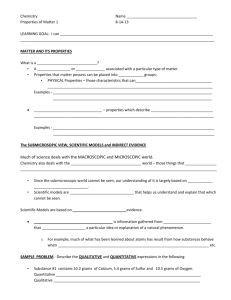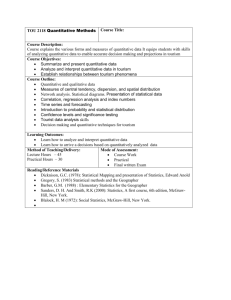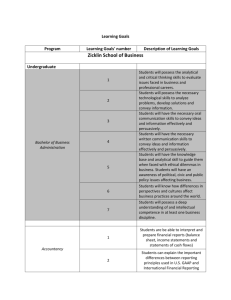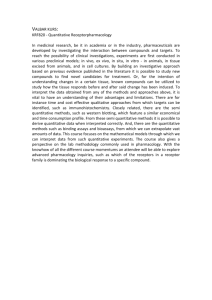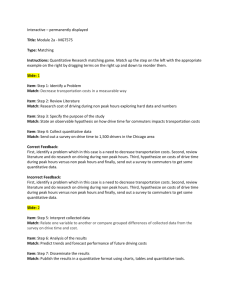Energy & States of Matter Objectives: High School Chemistry
advertisement
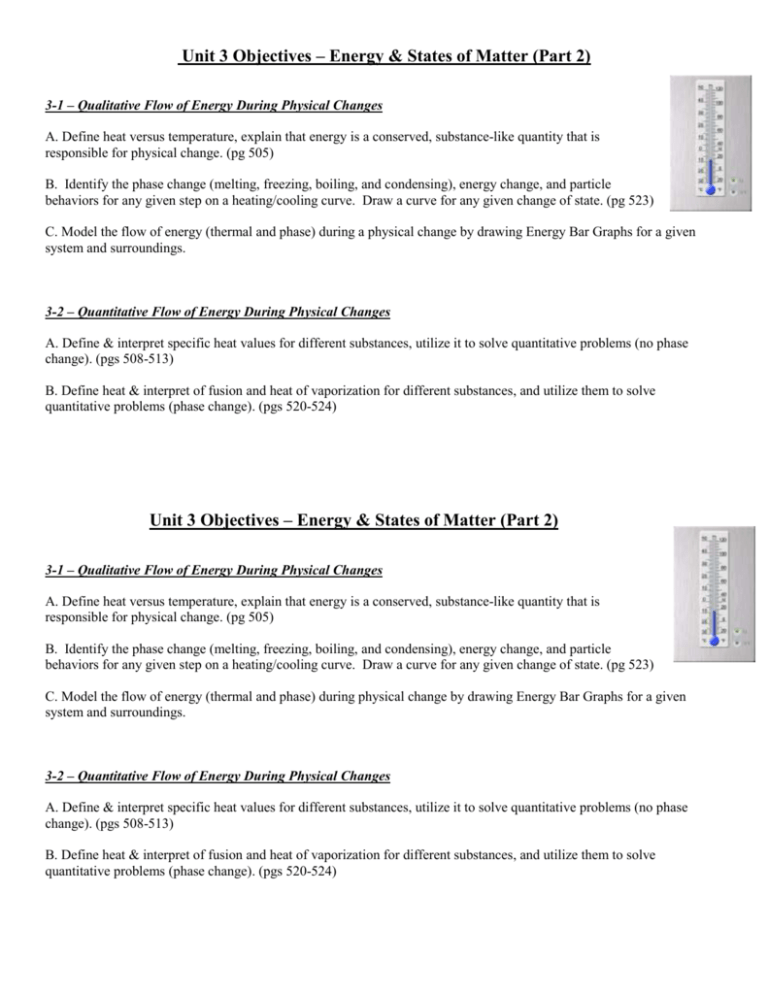
Unit 3 Objectives – Energy & States of Matter (Part 2) 3-1 – Qualitative Flow of Energy During Physical Changes A. Define heat versus temperature, explain that energy is a conserved, substance-like quantity that is responsible for physical change. (pg 505) B. Identify the phase change (melting, freezing, boiling, and condensing), energy change, and particle behaviors for any given step on a heating/cooling curve. Draw a curve for any given change of state. (pg 523) C. Model the flow of energy (thermal and phase) during a physical change by drawing Energy Bar Graphs for a given system and surroundings. 3-2 – Quantitative Flow of Energy During Physical Changes A. Define & interpret specific heat values for different substances, utilize it to solve quantitative problems (no phase change). (pgs 508-513) B. Define heat & interpret of fusion and heat of vaporization for different substances, and utilize them to solve quantitative problems (phase change). (pgs 520-524) Unit 3 Objectives – Energy & States of Matter (Part 2) 3-1 – Qualitative Flow of Energy During Physical Changes A. Define heat versus temperature, explain that energy is a conserved, substance-like quantity that is responsible for physical change. (pg 505) B. Identify the phase change (melting, freezing, boiling, and condensing), energy change, and particle behaviors for any given step on a heating/cooling curve. Draw a curve for any given change of state. (pg 523) C. Model the flow of energy (thermal and phase) during physical change by drawing Energy Bar Graphs for a given system and surroundings. 3-2 – Quantitative Flow of Energy During Physical Changes A. Define & interpret specific heat values for different substances, utilize it to solve quantitative problems (no phase change). (pgs 508-513) B. Define heat & interpret of fusion and heat of vaporization for different substances, and utilize them to solve quantitative problems (phase change). (pgs 520-524)
